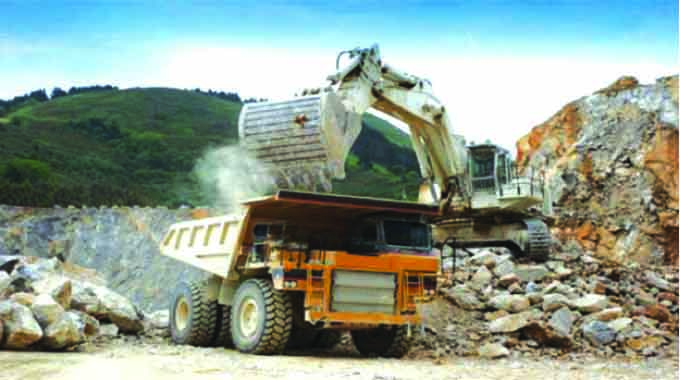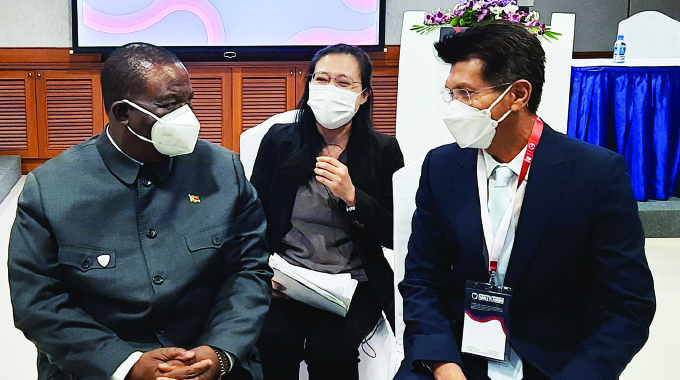EDITORIAL COMMENT : Mining output projections impressive

In many ways the news from the mining sector is excellent, with production expected to rise by 20 percent next year, along with 4 000 new jobs, as more of the major capital investment made during the first four years of the Second Republic comes on stream.
In 2018 mining produced around US$2,7 billion a year. The Government set very ambitious targets, seeking a US$12 billion a year industry by the end of next year, a 4,44-fold increase.
Since it takes time for an investment to result in extra metal, diamonds or coal progress was relatively modest at the beginning, largely driven at the very beginning by better use of what was already there.
But then it started rising as new investment and rehabilitation started producing significant results. By last year production had just about doubled to US$5,3 billion and this year is likely to see another major jump to US$8 billion, partly fuelled by more of the investment moving into the production phases, and partly by better world prices for many minerals.
There were some delays in implementing new investment as a result of Covid-19, but the Chamber of Mines sees that 20 percent estimate being the minimum, and sees it stretching the infrastructure, especially power generation.
The upshot is likely to be a four-fold increase rather than a 4,44-fold increase, over five years, and that can only be described as a triumphant success. This success came about largely because of several crucial decisions by the Second Republic. The first was obviously the pro-investment policies, announced at the very beginning and rapidly turned from policy documents into legal and administrative changes.
These changes were driven by the recognition that a reasonable investor needed to be sure that they were guaranteed access to the proven reserves around their mine for the lifespan of that mine and any extensions to their mine. The same investor needed security for their investment, that is so long as they continued to apply the labour and environmental laws, and pay their royalties and other taxes on profits, they were welcome.
All that removed the political risks of doing business in Zimbabwe, just leaving the normal business risks, and no government can manage global mineral markets and prices.
So Zimbabwe could leverage on its advantages, not just the minerals in the ground, but also factors like a reasonable climate and, very importantly, a skilled and trainable labour force.
Even when you pay your local skilled workers a decent salary and provide decent housing, it is still a lot cheaper to hire local than bringing in expatriates since the local staff do not need expensive “home leave”, do not need the high cost of educating children “back home” and will not get homesick. They are home.
So although an insistence on exceptionally high levels of local employment was not in the investment deals, it did not have to be.
Almost all mines owned by foreign investors use just about 100 percent local staff, at least from the stage when the mine is in production, all the way from mine managers down to the lowest level of trainee worker, with the investor drifting in now an again to check on progress.
The success has brought its own new problems, with energy infrastructure now seen as critical to maintain the momentum.
You cannot expand mining output four-fold without using a lot of extra electricity and mines and mineral processors are bringing this up.
This is a general problem across the economy. Farmers using irrigation need more power to run their pumps, industrialists need more power as they expand capacity utilisation and install new capacity.
Although over the next few months we will be commissioning an extra 600MW at Hwange, and then over the next couple of years adding more than 400MW as we rehabilitate the older stages at our largest power station.
But we are in the position that as we add the new capacity it is absorbed almost immediately.
Some in the mining sector, especially at the processing level, are worried about electricity charges although everyone has to live with the fact that keeping charges artificially low means skimping on maintenance and replacement, and we now all know exactly what that means.
Most miners accept the need to pay the proper price, and note that Zesa power if available is a lot cheaper than back-up generators run on diesel.
That makes life easier in some ways for Zesa, since it then has guaranteed customers paying the proper rate, which makes building new stations viable. The bugbear is that building a new station is not instantaneous.
Some, to ensure better supplies and cut at least the operating costs are installing solar power stations, and Dinson Iron and Steel is even building its own dedicated coal power station at Hwange.
The solar installations have high capital costs, but the operating costs are low since the fuel, sunlight, is free.
By tying in their solar plants with Zesa, these investors can possibly use some of the storage capacity Zesa in effect has with Lake Kariba and an oversized power station at Kariba South.
But in any case the dual metering, whereby the solar installation owner sells to Zesa when in surplus and buys back when the sun goes down gives them advantages. So we have mining companies looking around their mine locations for suitable solar sites and some are already installing the early phases of their stations.
This obviously needs to be encouraged, but out present investment policies and administration seem to cover all the angles. Permission to build a solar plant is plain sailing, and even if extra land is needed we cannot see that being a problem.
Mining is a direct measure of the successes of the Second Republic. It is largely financed through direct investment, so expansion shows how good that policy is. It creates good jobs for skilled workers, a lot of skilled workers. The bulk of production outside coal is exported, and even coke production and exports are rising and set to rise further and faster, and the trend to more local processing again adds value and skilled jobs.
Taxes, thanks to moderate royalties on volume, are pretty well guaranteed regardless of accounting conventions used to calculate profits.
The investors win with a return on their capital. Zimbabwe wins with its exports bringing in hard currency, with the growing number of good jobs, with the taxes adding to the revenue needed for other development and services, and with the general development down the line as the mining companies and their staff buy ever more of their needs locally.
We have seen dramatic progress in the Second Republic and just need to maintain that, while working on any bottlenecks, such as power stations, so that we do not get any slow downs.









Comments